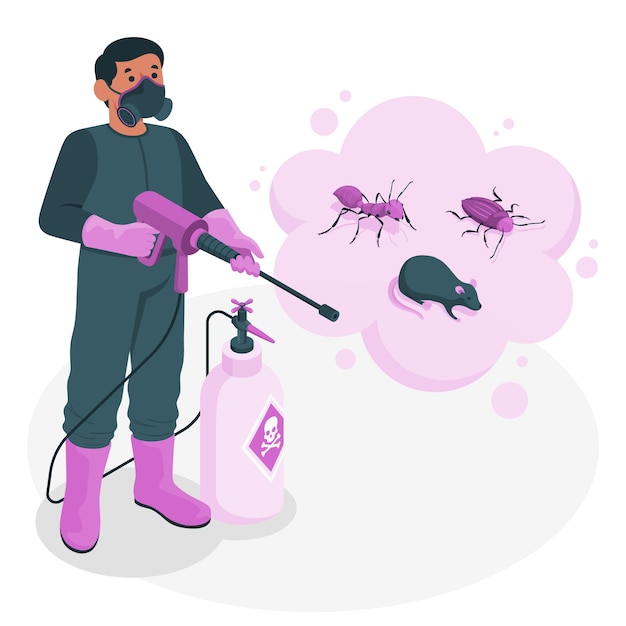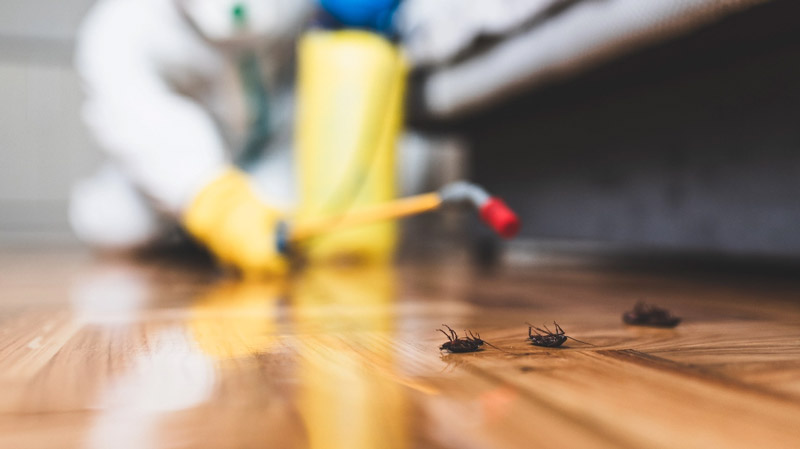Comprehensive Rodent Control Coquitlam Services for Peace of Mind
Comprehensive Rodent Control Coquitlam Services for Peace of Mind
Blog Article
Safe and Dependable Insect Control for Lasting Protection
Effective bug management needs a complex approach that stabilizes eco-friendly integrity with the requirement for reliable pest suppression. The subtleties of these methods may not be quickly clear, motivating a closer evaluation of the techniques that can lead to lasting pest control results.
Comprehending Parasite Control Methods
Bug control incorporates a selection of methods targeted at managing and removing undesirable pests and rats that can intimidate both health and home. Comprehending these techniques is critical for reliable pest management.
The primary categories of pest control methods include mechanical, biological, and chemical approaches. Mechanical methods involve physical barriers and catches to prevent pest access and capture undesirable varieties. As an example, making use of displays on home windows or utilizing sticky traps can considerably decrease insect populations without presenting unsafe substances.

Chemical pest control is usually the most identified technique, utilizing chemicals to eliminate bugs. These chemicals can be effective however must be made use of with caution to prevent adverse results on non-target species and the atmosphere.
Advantages of Eco-Friendly Solutions
How can environmentally friendly services transform insect control methods? The adoption of environment-friendly bug control approaches provides countless advantages, substantially enhancing the efficiency and safety of parasite administration.

One more advantage is the positive impact on local biodiversity. Environment-friendly solutions are designed to target details parasites while maintaining helpful bugs and wildlife, advertising a balanced ecosystem. This technique lines up with the expanding consumer need for sustainable techniques, improving the reputation of parasite control companies.
Integrated Pest Monitoring Techniques
The execution of environmentally friendly solutions naturally brings about the adoption of Integrated Parasite Management (IPM) approaches, which further boost pest control effectiveness. IPM is an all natural method that incorporates multiple techniques to take care of insect populaces while minimizing environmental effect. This approach emphasizes making use of organic, cultural, mechanical, and chemical controls, guaranteeing a well balanced and lasting technique of parasite management.
One essential element of IPM is the comprehensive analysis of parasite activity and environmental conditions. By keeping an eye on parasite populations and identifying their life cycles, professionals can execute targeted interventions that interfere with the pest's habitat or lifecycle, decreasing reliance on chemical pesticides. Furthermore, cultural practices such as plant turning and environment adjustment can significantly diminish insect establishment and reproduction.
Another vital element is making use of organic control representatives, such as helpful pests or microbes, which can normally reduce bug populaces. When chemical applications are needed, IPM prioritizes the use of low-risk pesticides and applies them selectively, minimizing direct exposure to non-target microorganisms and human beings.
Integrating IPM methods not only improves pest control effectiveness yet additionally advertises a much safer community, aligning with the expanding need for sustainable practices in pest monitoring.
Safe Practices for Home Owners
Comprehending the significance of safe techniques in bug control can equip homeowners to effectively take care of insect issues while guarding their health and wellness and the environment. Implementing safe methods and safety nets is essential in minimizing direct exposure to harmful chemicals.
House owners should first analyze their environment for conditions that bring in pests, such as standing water, food, and mess waste. Routinely cleaning and securing access points can discourage bugs from invading the home. Utilizing natural deterrents, such as necessary oils or diatomaceous planet, can provide efficient options to chemical pesticides.
When chemical therapies are necessary, property owners must select items that are specifically labeled as safe for domestic usage. It is vital to follow application guidelines meticulously to avoid overexposure. Additionally, utilizing targeted therapies in locations where bugs are recognized, instead of covering splashing, can substantially lower chemical usage.
Lastly, maintaining open communication with pest control professionals is essential. Homeowners should ask about the safety and security of items utilized and request environmentally friendly options whenever feasible. By taking on these risk-free methods, property owners can create a much healthier living setting while successfully handling insect issues.

Tips for Long-Term Protection
Developing a bug management strategy that stresses long-lasting protection can substantially improve the effectiveness of the secure methods previously reviewed. To accomplish this, homeowners need to carry out regular examinations of their residential property, focusing on concealed areas such as attic rooms, basements, and crawl rooms. Early detection of parasite activity is critical in stopping infestations from holding.
These methods minimize attractants that attract pests into the home. Sealing entrance factors, such as splits around doors and windows, can efficiently block prospective parasite accessibility.
Landscaping should likewise be thought about; maintaining plants cut and keeping a range in between plant life and the home minimizes hiding areas for bugs. Using all-natural deterrents, such as necessary oils or diatomaceous planet, can better inhibit infestations without resorting to harsh chemicals.
Lastly, collaborating with a professional pest control solution for routine analyses can give an added layer of protection. These specialists can supply customized suggestions and advanced treatments, ensuring that your home remains safeguarded against insects in the long-term.
Verdict
To conclude, trustworthy and risk-free insect control requires a complex strategy that highlights environmentally friendly methods and incorporated bug administration. By executing all-natural deterrents, performing routine inspections, and keeping appropriate sanitation, homeowner can considerably reduce parasite populations while protecting helpful bugs and the setting. Partnership with professional bug control services boosts the effectiveness of these approaches, guaranteeing customized options that provide enduring protection and comfort against future invasions.
Effective insect monitoring needs a complex method that stabilizes ecological stability with the demand for effective bug reductions. The adoption of green pest control techniques supplies various advantages, dramatically enhancing the efficiency and safety and security of pest administration.The execution of eco-friendly services normally leads to the adoption of Integrated Insect Administration (IPM) approaches, which further improve bug control efficiency. exterminator coquitlam. By monitoring insect populations and determining their life cycles, experts can moved here implement targeted interventions that disrupt the insect's habitat or lifecycle, minimizing dependence on chemical pesticides.In verdict, dependable and risk-free insect control needs a diverse technique that highlights green approaches and incorporated bug monitoring
Report this page